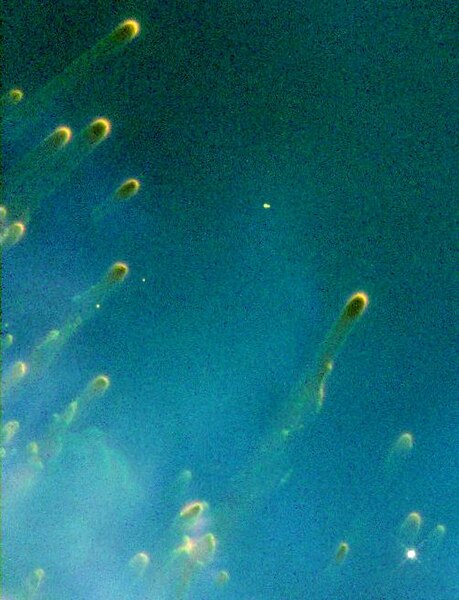De58te wrote: ↑Sun Dec 02, 2018 7:12 am
RocketRon wrote: ↑Sun Dec 02, 2018 6:51 am
Has anyone proposed what may have preceded these huge pillars of dust,
and when this may have happened. ?
i.e. was this some giantic cataclysmic event in distant antiquity,
or some less extreme series of more local events more recently ??
Are there any tell-tale clues, or did the evidence evaporate with the event(s).
Bit like asking how the earth came to be here, really.... ?
Well this is my unscientific layman hypothesis. The big bang created mostly 90% hydrogen and 10% helium. Now even though those pillars probably contain a lot of that hydrogen gas, the reason they call it opaque dust is because it must be made out of stoney material too like carbon and silicon. Some iron too. That didn't exist after the big bang. It must have been made in supernova explosions from first generation stars.
Now when the stars explode they blast out in every direction, so why are these things formed as pillars? Maybe dark matter comes in use. Dark matter has been said to surround ordinary matter. It also outnumbers ordinary matter by a factor of 5 or 6. Perhaps the wandering dust particles were marshaled together into the pillars by the region of dark matter.
The pillars didn't
form as pillars. They started out as slightly thick and massive parts of the very big nebula that collapsed until it created the right conditions to start making stars.
The Coalsack nebula at left isn't very big or massive, and it won't ever create very massive stars. The basic principle is the same, however: You have a concentration of gas and dust, which collapses by some mechanism and creates the right conditions for making stars. Note, by the way, that the Coalsack is mostly made of gas, although it is dust that gives it its dark color.
Pillars, newborn stars and jets in the Carina Nebula.
Image Credit: NASA, ESA, M. Livio and the Hubble 20th Anniversary Team (STScI)
We have every reason to believe that almost all newborn stars create energetic jets. But hot massive stars, the kind of stars that have been born in the Eagle Nebula, likely create even more powerful jets. Even after the massive stars have "settled down" enough not to shoot out jets, they still produce an extremely energetic stellar wind. Also they blast huge amounts of energetic ultraviolet photons at their environment.
The end result? They blow away most of their natal nebula. However, parts of this nebula will always be thicker than others, and the thickest parts will last the longest. These thick structures will become "stand-alone" pillars when everything around them has been blown away.
You find these pillars in most young nebulas that contain massive young stars. In the case of the "Statue of Liberty" nebula at left, the statue's head, arm, and torch are actually dust pillars. Similarly, the Horsehead Nebula is a dust pillar, the Cone Nebula is a dust pillar, the Elephant Trunk nebula is a dust pillar, and many others.
The Helix Nebula with dust pillars.
Closeup of some Helix Nebula dust pillars.
Dust pillars are also created in planetary nebulas, as in the Helix Nebula, and basically by the same mechanism. Even though the central star of a planetary nebula isn't very massive at all, it is still very hot, and it blasts its own cast-off outer layers with a fierce wind and hard ultraviolet light.
Ann
 The Fairy of Eagle Nebula
The Fairy of Eagle Nebula



